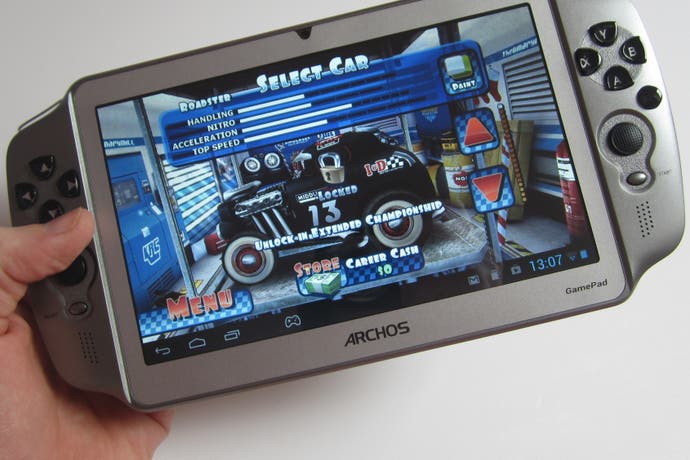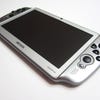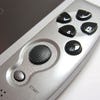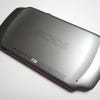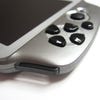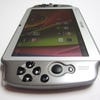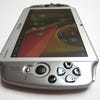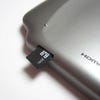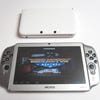Archos GamePad review
An Android tablet with physical gaming controls - is it a match made in heaven? Digital Foundry investigates.
At the heart of the Archos GamePad is the seed of an idea which is so compelling it makes you wonder why no-one else has attempted it. So many Android titles attempt to marry traditional gaming concepts with a touch-based interface, so why not give those games the control system they so badly desire: proper physical buttons and pads?
Perhaps the lukewarm commercial reception afforded to the Sony Ericsson Xperia Play has dissuaded hardware manufacturers from trying the same trick with a large-screen device, or maybe the increased proportions required to accommodate such an interface have been deemed too off-putting to the consumer; whatever the reason for this reticence, the wait for such a product is now over. French company Archos has taken the plunge, beating the rival Wikipad to market (though if you really want to be pedantic, the hilariously poor Droid X360 Chinese Vita clone beat them both to the punch).
The GamePad is essentially an Android tablet with a 7-inch display and dedicated gaming controls. It boasts two analogue slider nubs (think PSP), a digital pad, four fascia buttons, and two shoulder triggers. It also has Start and Select buttons. This dazzling array of inputs is found to the left and right of the 1024 x 600 pixel screen, making the device slightly longer than most 7-inch slates.
A match made in heaven, then? Not quite. Despite its good intentions the Archos GamePad manages to fail on practically every conceivable level, squandering the incredible promise offered up by the concept of a true gaming tablet.
Archos isn't famed for using high-grade materials in its products, and the GamePad adds to this unenviable reputation by providing a very cheap and nasty first impression. The plastic casing doesn't exude anything like the same kind of desirability as that of the Google Nexus 7, and the design itself looks somewhat awkward when placed alongside traditional tablet devices. Those gaming controls might be a good idea in theory, but it's almost impossible to make something like this look visually appealing when such an interface is fused onto its sides.
Of course, such superficial concerns could be swept aside if the device performed well, but sadly that simply isn't the case. The Archos GamePad's physical controls are uncomfortable to use and badly designed - so much so that they might as well not even be present. The d-pad isn't actually a pad at all, but four entirely separate buttons. Those with keen memories might recall a similar control arrangement on the Bandai WonderSwan, but it's not a configuration that is particularly successful.
Because the pad is not one complete piece, hitting diagonals is frustratingly difficult, and the degree of travel on each button is quite extreme. Archos has clearly been inspired by the design of the iconic Sony PlayStation pad, but even that is still a singular piece of plastic placed beneath the casing of the controller, rather than four distinct buttons.
"For a device that sells itself on its gaming credentials, the compatibility issues we found with a number of high-profile titles are clearly unacceptable."
The disappointment of the D-pad is mitigated slightly by the analogue sliders; while they're not up to the standard of those seen on the PSP or 3DS (the left-hand nub on our review unit feels like it's moving around on sandpaper), they do the job well enough. The biggest issue is that when using them in an FPS title like Dead Trigger - arguably the situation when dual-stick controls are most useful - it's difficult to hit the L and R shoulder triggers, which are your only option when it comes to iron sights and discharging your weapon.
Being saddled with a crippled physical interface doesn't do the GamePad any favours - certainly not when you consider that the device is being sold on the advantages of such an arrangement - but things are made even worse by the much-hyped GamePad Mapping tool. Using this pre-installed app, you assign touch-screen controls to the various buttons by overlaying icons which relate to each physical input. Like almost every other element of the GamePad, the mapping tool is lacklustre. Despite Archos' assurances that the app already has pre-configured settings for many popular Android games, it rarely works properly. Games with recognised settings work once then fail to work again, and the app itself is unstable and causes latency issues. For example, using the analogue sliders actually causes a processor hit - when playing Sonic CD, we noticed that as soon as one of the nubs was touched the music would start skipping.
The software problems don't end there, however. The GamePad is running Android JellyBean 4.1, but the augmentations and changes made by Archos have created an unpredictable and fussy beast. Pauses are commonplace - the tablet often freezes on the same screen for several seconds, refusing to respond to your prods and presses. Other times, the Launcher application - basically the program which controls the main interface - refuses to respond, flagging up the usual Android dialogue box asking if you're like to wait or terminate the process. Basically, navigating around the Archos GamePad is about as pleasurable as having root canal surgery without pain relief; it can't be relied upon to perform any activity without software crashes and other annoyances.
"The hardware looks good on paper and benchmarks are competitive but the actual user experience lags way behind similarly specced Android devices."
| Galaxy Nexus (Android 4.1) | HTC One X | Nexus 4 | Galaxy Note 2 | Archos GamePad | |
|---|---|---|---|---|---|
| Quadrant Standard | 2078 | 4870 | 4906 | 5765 | 3522 |
| AnTuTu Benchmark | 4724 | 11065 | 10580 | 13305 | 12511 |
| GLBenchmark 2.5.1 Egypt HD On-Screen/Device Native Res | 8.3FPS | 21.7FPS | 39FPS | 18FPS | 14FPS |
| GLBenchmark 2.5.1 Egypt HD Off-Screen/1080p | 5.4FPS | 14FPS | 31FPS | 17FPS | 13FPS |
With a dual-core processor and quad-core graphics chip, you'd think that the GamePad has some decent power under the bonnet - representing great value when you take into account that £129.99 retail price. That power isn't immediately apparent from the way in which the tablet performs, however; intense 3D games are plagued with jerky animation and even the simple act of moving around the interface is rarely smooth.
The litany of fatal problems continues apiece when you attempt to install Android software to the device. Many popular games - such as Grand Theft Auto III, Max Payne and R-Type - are listed as incompatible with the GamePad. Given that it's running a fairly standard setup - a dual-core ARM Cortex A9 CPU and a Mali 400 GPU - we're unsure as to why the Google Play store thinks that Archos' slate isn't up to the challenge of running these games. Whatever the reason, many of Android's best titles simply cannot be downloaded to the device - a glaring oversight when you consider how hard Archos is trying to sell the GamePad as the ultimate gaming tablet.
Another crushing disappointment we've not yet touched upon is the screen; the LCD panel has poor colour reproduction, low brightness and lacks the pin-sharp sheen witnessed on the Nexus 7 and Amazon Kindle Fire HD. It also suffers from atrocious viewing angles; tilting the tablet slightly away from you causes the image quality to suffer dramatically, which is quite a problem as this tends to be the usual way you hold a device of this type.
"It's standard Android 4.1 under the bonnet with minor customisations, but OS stability is a mess compared to the likes of the Google Nexus 7."
Battery life is another inexplicable shortcoming - from a full charge, the GamePad drains its power cell within eight hours, even if you're not using it. At first we assumed our unit must have had some kind of background process consuming the juice, but even with WiFi and sync switched off, it would go from a full tank to empty in double-quick time. During use, the tablet's stamina is even worse; the GamePad is without a doubt one of the poorest-performing Android products we've ever used when it comes to battery life.
In terms of storage, there's 8GB of internal flash available, of which the user has access to 6.02GB. That space fills up fast if you intend to download complex 3D games and other files, making the presence of a microSD card slot a real lifesaver. This is one area where the GamePad scores points over the Nexus 7 - Google's slate lacks the same expansion option.
Archos GamePad: the Digital Foundry verdict
There's definitely room in the market for a gaming-focused tablet - the intense interest surrounding the announcement of the Archos GamePad proves as much. This device had the potential to be something truly special, and at £129.99 it could have made in-roads into the valuable sectors currently being ruthlessly patrolled by the Nintendo 3DS and PlayStation Vita.
Sadly, Archos' execution is depressingly slapdash, and very little care has been taken when it comes to the design of the much-hyped physical controls. It's a moot point, however; even if the interface been perfect, that wouldn't have totally overcome the other significant issues which impact the GamePad's performance. The battery life is terrible, the screen poor and the software buggy and frustrating to use on a regular basis. To make matters worse, the system is incompatible with many key Android games, robbing the product of its USP.
If you're attracted to the GamePad's offer of interface nirvana then we'd advise you simply pick up a Nexus 7 and grab yourself a cheap Bluetooth controller - such a setup may not offer the same elegant mobility as Archos' offering, but it will grant superior performance and a more complete user experience.
"An excellent concept let down by a brutally poor implementation, we simply can't recommend the Archos GamePad."
